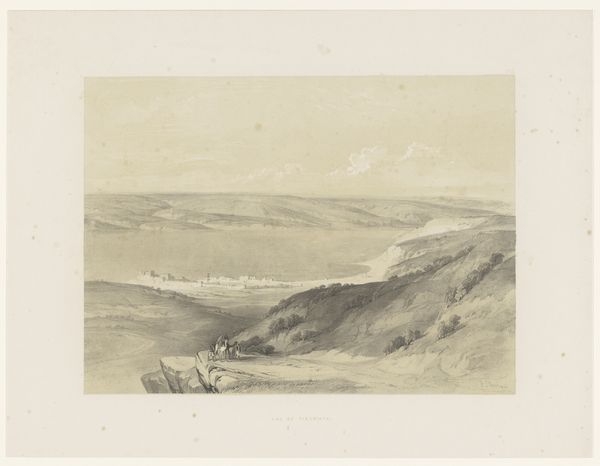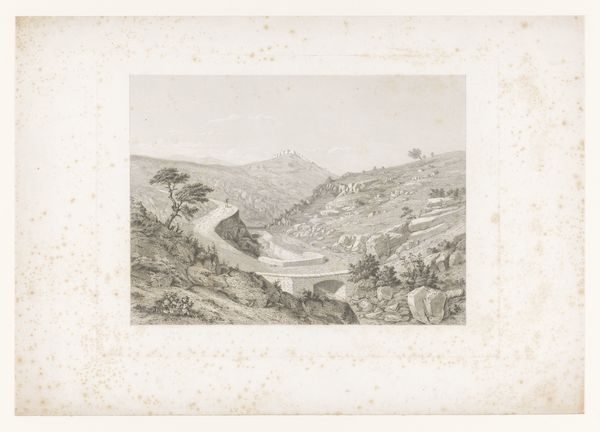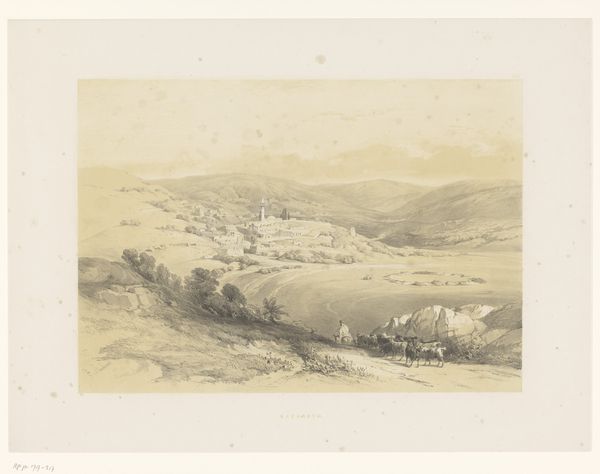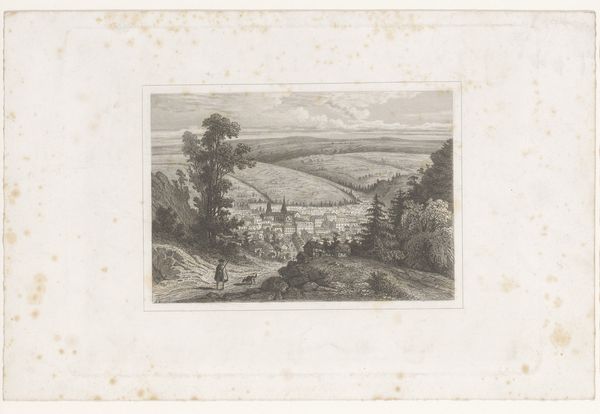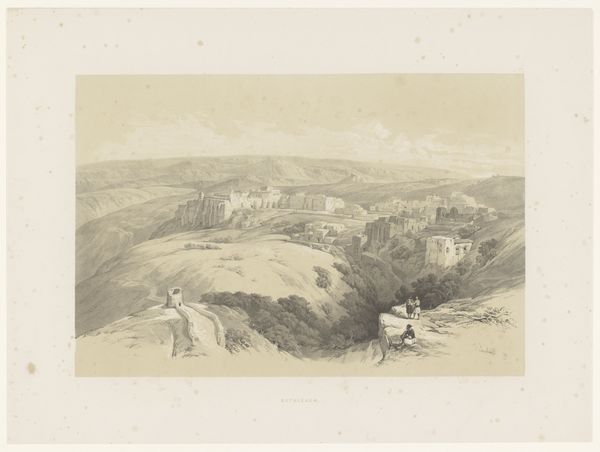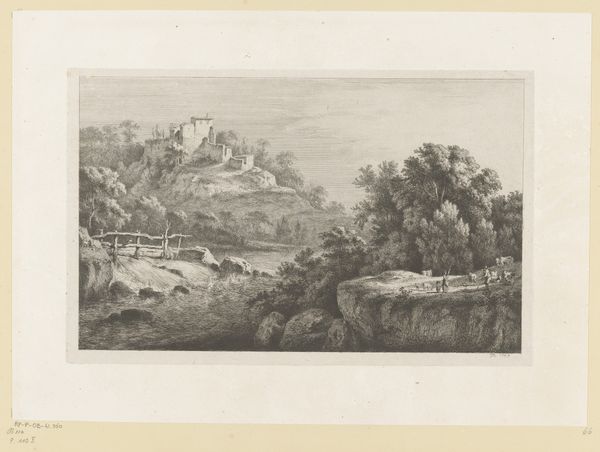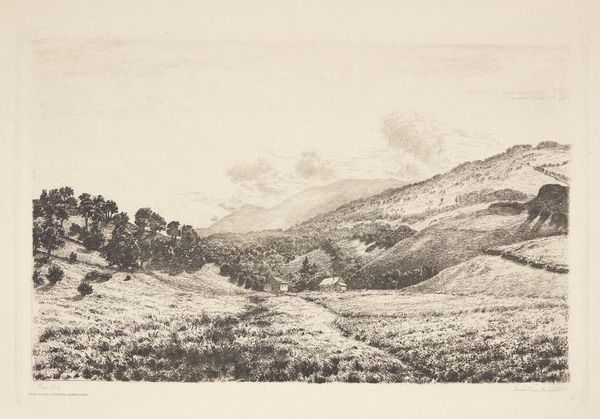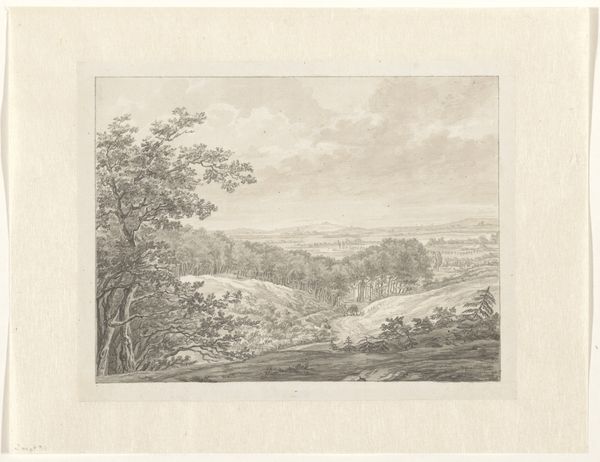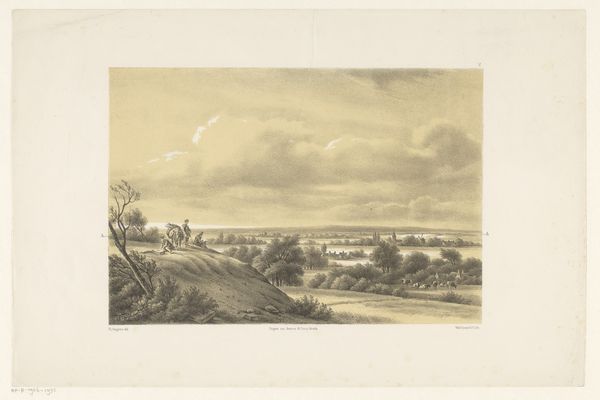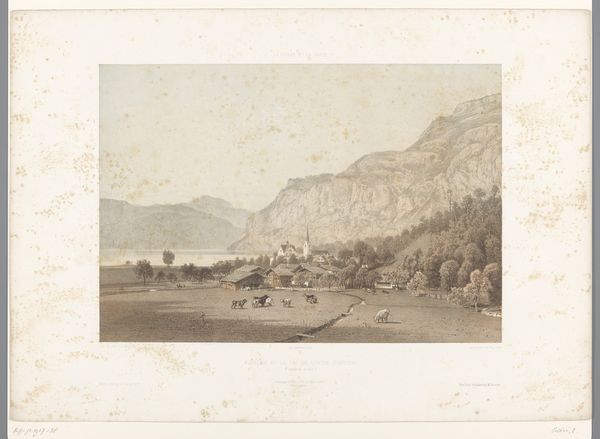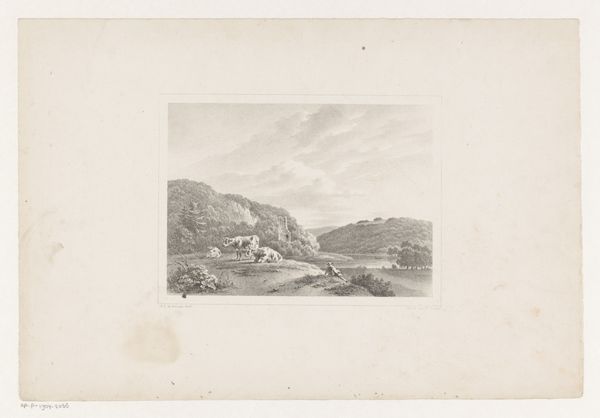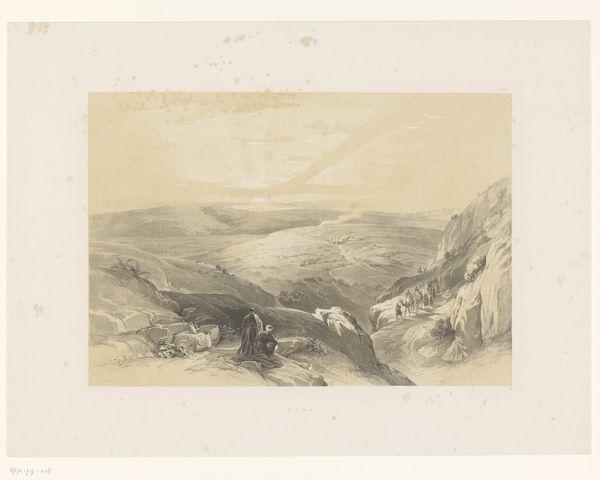
Dimensions: height 393 mm, width 532 mm
Copyright: Rijks Museum: Open Domain
Curator: Here we have "View of Jerusalem from the Mount of Olives," a lithograph by François Stroobant, dating back to 1852. Editor: Well, if I didn't know better, I'd say that image whispers the word "melancholy". It is so subdued in color! The whole scene seems like a fading memory. Curator: It is interesting how the artist employs lithography, a printmaking technique, to capture such a vast landscape, aiming to present, from an elevated point, the ancient city in a relatively naturalistic manner for the period. What formal qualities do you perceive that convey that sense of fading? Editor: I'd say it is mainly how Stroobant uses the gradations of gray. It gives a hazy atmosphere, doesn’t it? Then notice how the lines become softer as the perspective recedes to give depth to the valley that unfolds. The whole scene is meticulously structured, yet remains oddly detached. Is it that romantic realism I've been reading so much about these days? Curator: Absolutely, I believe the tension stems from this negotiation. The scene is meticulously observed, placing it squarely within a rising movement toward realism, however, the overall tone leans heavily into Romanticism's emotional, almost spiritual rendering of nature and place. And consider too, what it means to make a pilgrimage, even if through a print, to one of the holiest places in the world, and that in a new era of mass-produced imagery! Editor: It certainly prompts me to ponder, doesn't it? Mass-produced spirituality. It's kind of like buying enlightenment at a gift shop. Is that overly cynical of me? I feel transported back in time and confronted with our contemporary contradictions simultaneously! Curator: Not at all. The print holds these contradictions beautifully, like layers of sediment revealing different historical moments and emotional states. The technique mirrors our own experience of a city laden with so much history, where past and present intertwine, forever shifting how we observe. Editor: I can now really see that balancing act between meticulous detail and fading atmosphere and find it really moving now that I recognize what’s behind the curtain! Curator: Precisely. It is in these subtle contradictions that the artwork reveals its depth. It invites contemplation not only of Jerusalem itself, but the ways in which we frame our experience of history and place.
Comments
No comments
Be the first to comment and join the conversation on the ultimate creative platform.
